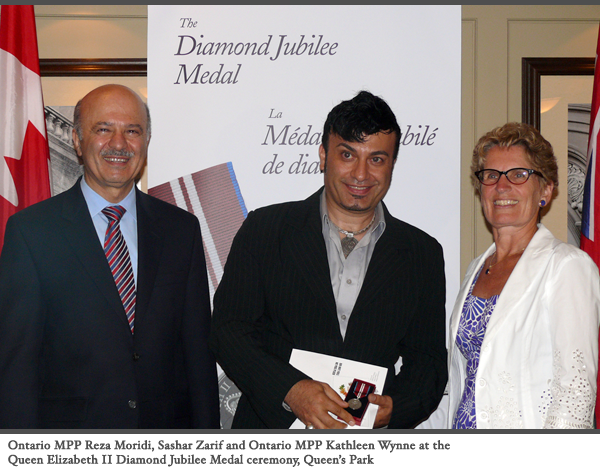| 
previous page I started working with some very famous Mugham singers. Then I met YoYo Ma, here in Toronto, when Azerbaijani musicians came to play for him. They got very interested in the whole concept. After all these years, I am working with the only approach that I feel contains all my research. Mugham is a platform to start this on, and also, a school of performance. I have the practice and the movement. Now I have to negotiate it for the stage and see what is possible. 
I'll give one example. The artistry in the music is how we change the mood. You're in a sad mood, and you move into excitement. They do this to arrive at a deep place within each of the participants. In Iran there are priests who are hired to make people cry by singing their stories. They sing the story and they are so well aware of the psychology of moods – they go to an exciting mood and then drop you down to sadness – you break into tears, no matter what.The change of moods is for getting deeper into your existence, more in touch with feelings. When I perform in one structure, it always changes. I like that the musicians can change it. The singer can do it also, but for the dancer embodying these changes it is very difficult; if the dancer is not in a happy place, sometimes it's very hard to make that transition. So if the dancer is not ready to make a transition they can take another route, start stamping or something. That's where I am now – how do I make this structure work onstage for the dancer.CA: You said awhile ago that you were kind of an orphan – but at the same time you're a culture bearer - unique in Canada, if not the world. SZ: Thank you. I really feel I have something to give. For me it's very important on a cultural level, and on a cross-cultural level. Because, if people relate to the same sentiments the way I do, whether they come from that part of the world or not, whether they live in a diaspora or at home – if they find a deeper way to connect with their identity, with where they come from, if they make peace with their past, not to sell it to become accepted, or hang onto it and become orthodox, or accept blindly and live there in the past – if they can achieve these things, they actually have a platform to evolve from.I think this study of integrated forms can provide that, and especially at this time. I want to start an institute or academy – hopefully in the Toronto area. Though I don't have a name for this entity yet, I think of it as “Mugham: the integrated time arts school”.This integrated study will offer participants many ways to understand the past, take pride in it, but also see the future because Sufism is a contemporary practice. Rumi is timeless – people still read and relate to Rumi's poetry; it can be about today, or ten years past or future. So this form of practice is based on this timeless practice, so it can promote that, and push people forward, and also help them meet each other now. 
Challenges are there – I have to explain that to people who are not from the culture, but also spend more energy to explain it to people who are from the culture. Everywhere in the world now nationalism is coming back. This nationalism is blinding us from knowing where we come from and what we have. We are missing a lot of commonalities; people from the region I come from are becoming so nationalistic, seeing all the differences, and are missing these commonalities that they still take pride in every day. They say we come from these civilizations, and they don't know the civilizations were so mixed. They were great because they were mixed. What I do has a lot to do with culture – it's not just movement, it has to do with these nationalistic themes; the next phase of work is my project Dance of Mugham. 
On December 21, 2012, the first Mugham International Festival of Integrated Arts will take place at the Toronto Centre for the Arts. On a show with Alim Quasimov and culminating eleven years of research, Zarif premieres Dance of Mugham, launching a trilogy. | |




